LG B3 vs LG C3: the differences between LG's OLED TVs explained
The LG C3 looks set to best the LG B3 in important areas, but is it worth the extra money?
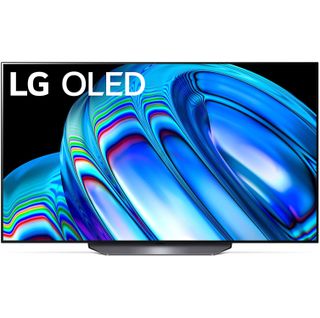
Sizes: 55, 65, 77-inches
Screen tech: OLED
Processor: Alpha a7 Gen 6 chip
HDMI: 4 (2x HDMI 2.1)
HDR: HDR10, HLG, Dolby Vision
The LG B3 OLED TV is likely to be the cheapest TV LG will put out this year in most countries. It comes with a less-advanced a7 Gen 6 processor compared to the LG C3's a9 Gen 6 chipset, and a dimmer screen. But it will has premium specs you'd expect from LG’s OLED range, including next-gen gaming features and an upgraded interface.
For
- Cheapest LG OLED TV in US/UK
- 4K 120Hz OLED panel
- Upgraded webOS software
Against
- Image quality weaker than C3
- Fewer size options
- Only two HDMI ports
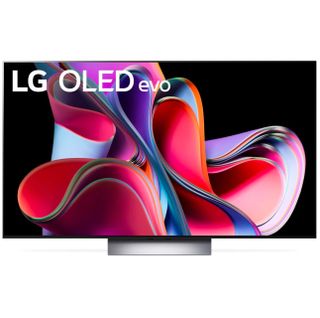
Sizes: 42, 48, 55, 65, 77, 83-inches
Screen tech: OLED Evo
Processor: Alpha a9 Gen 6 chip
HDMI: 4 (4x HDMI 2.1)
HDR: HDR10, HLG, Dolby Vision
The C3 features LG's latest and greatest high-end image processor, which promises even better contrast – and that combines with a brighter screen than the B3 on 55-inch models and up. Four HDMI 2.1 ports add total future-proofed flexibility, and it comes in more sizes. If you can spend the extra cost, you get a big set of upgrades over the B3.
For
- LG's best processor
- Bright screen than B3
- Four HDMI 2.1 ports
Against
- Few changes over LG C2
- More expensive than B3
- Not all sizes equally bright
This year’s LG B3 OLED and LG C3 OLED panels will likely offer some of the best balance between price and performance you’ll find in a high-end TV in 2023. Both should be brilliant TVs and are set to improve upon the already brilliant B2 and C2 models (the latter taking the crown in our best TV guide).
There are key differences between the two OLEDs, though, which could be crucial when deciding what the best OLED TV is for you. Historically, LG’s C series of OLEDs has nailed the sweet spot by delivering amazing pictures for considerably less money than the company’s premium G line screens. As for the lower-end B lineup, like last year’s LG B2 OLED, this will be a more modest offering that cuts certain screen features in order to deliver the most aggressive price point possible.
An initial look at the specs of both OLED TVs shows that the sets primarily differ in terms of price, size and brightness. Below, we pit the LG B3 OLED and C3 OLED against each other (covering key features and differences) to help you choose the right OLED TV for your needs and budget.
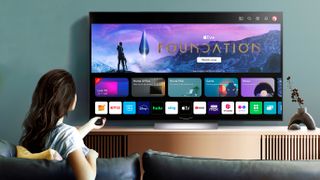
LG B3 OLED vs LG C3 OLED: Price, sizes and availability
As was the case with 2022’s B2 and C2 OLED panels, LG offers more screen sizes for the C3 than it does for the B3. While the C3 range impressively spans from 42-inches all the way up to a colossal 83-inches, it looks like the B3 will only be available in 55, 65, and 77-inches.
If you’re looking for a new OLED TV that will be the perfect fit for a cramped home office, the more versatile C3 range will likely be a better fit for your needs (last year’s 42-inch C2 proved to be a killer alternative to a traditional PC monitor).
We don't have prices for the B3 and C3 yet, but we expect them to be in line with the launch prices of last year's B2 and C2 models, so here's what to roughly expect:
| Size | LG B2 price | LG C2 price |
| 42-inch | N/A | $1,399 / £1,399 (around AU$2,000) |
| 48-inch | N/A | $1,499 / £1,399 (around AU$2,200) |
| 55-inch | $1,599 / £1,799 (around AU$2,300) | $1,799 / £1,999 (around AU$2,600) |
| 65-inch | $2,299 / £2,599 (around AU$3,300) | $2,499 / £2,799 (around AU$3,600) |
| 77-inch | $3,299 / £3,599 (around AU$4,800) | $3,499 / £3,699 (around AU$5,100) |
| 83-inch | N/A | $5,499 / £4,799 (around AU$8,000) |
Budget-wise, there’s not much to separate the 55-inch versions of the B3 OLED and C3 OLED, which will no doubt prove the ideal size for most people in 2023. So if you can spare the extra, it's likely worth getting the C3.
We expect the LG C3 to become available in March 2023, while the LG B3 is likely to follow a little later – somewhere between April and June 2023.
LG B3 OLED vs LG C3 OLED: Features
LG’s B series of OLEDs are often seen as the runt of the litter, but has that changed when comparing the B3 to the C3? Predictably, features have been cut, but considering the price tag of the B3 panels, it’s a range that many budget-conscious consumers looking for a cutting-edge OLED TV in 2023 are seriously going to consider.
At a glance, both the B3 and C3 include all the key features of their predecessors. You’re still looking at two 4K 120Hz OLED panels that pack in the best gaming-friendly features around (both sets support VRR, FreeSync Premium, Nvidia G-Sync and low latency modes). If you own a PS5 or Xbox Series X, both the B3 and C3 should be ideal gaming screens.
There are obviously cuts when it comes to the B3, though. Compared to the higher-end Alpha a9 AI Gen 6 processor of the C3, the B3 has to make do with a stripped-down a7 processor. What will this mean for everyday viewing? The B3 will likely display a little more noise in dark scenes than the C3, upscaling from lower resolutions up to 4K will probably be less sharp than the pictures the C3 can produce, and motion processing may not be quite as clear and smooth.
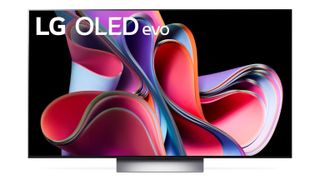
How bright both panels can get will also be a factor. The B3 misses out on the new Evo Brightness Booster technology of the C3 (already a reduced version of the Brightness Booster Max tech seen in the upcoming premium LG G3 OLED). This means the C3 will undoubtedly produce punchier, more vibrant pictures than the B3 is capable of at the same sizes – that was exactly the case with the B2 versus the C2, and the panels haven't changed in either model. However, the 42-inch and 48-inch LG C3 models will be about as bright as the LG B3… but the B3 doesn't come in those sizes, of course.
If you’re a fan of hand-free control, it’s also worth noting the B3 misses out on the built-in microphone voice control the C3, G3 and tippy top Z3 OLED panels boast this year. The lower-end screen also misses out on the new lightweight panel housing the C3 and above pack in.
However, prospective buyers of the lower-end screen will be relieved to know it shares several new features with the C3. Both panels support LG’s refined webOS interface that introduces custom user profiles and avatars. A highlight of the new OS? Support for Matter; the popular smart home multi-view tech that allows you to watch different sources simultaneously.
Both the B3 and C3 also support the new Quick Media Switching feature (QMS-VRR). It may not sound particularly sexy, but it promises to cut out those temporary black screens that occur when switching between HDM1 2.1 ports, and can allow set-top boxes to vary their framerate on the fly, for example for easily switching between 24fps movies and 30fps TV. The only boxes that support this so far are the Apple TV 4K (2021) and Apple TV 4K (2022).
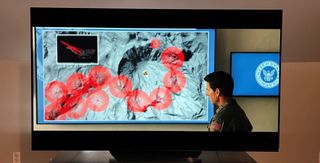
LG B3 OLED vs LG C3 OLED: Design
When it comes to design differences between the B3 and C3 range… it’s currently tough to tell. We’ve yet to see many full product shots of the B3, although thankfully, LG did show off the C3 OLED at CES 2023. Unsurprisingly, the mid-range panel sports the same impressively slim bezel as the C2, and we expect the B3 to come in a similarly svelte form factor.
Looking at past ranges, the B3 and C3 will most likely look identical if you’re planning to wall hang either OLED. The only real difference is likely to come with stands – the C3 has a small stand that's quite Apple-esque, while the B3 will probably be more plastic and curved.

LG B3 OLED vs LG C3 OLED: Conclusion
Coming in a wider range of sizes and boasting brightness-boosting technology, the C3 is currently easier to recommend than the B3 for most people looking for a cutting-edge OLED TV in 2023. The B3 seems incredibly similar to last year’s B2, though an upgraded webOS interface should provide an even sleeker navigation experience.
But with sky-high energy prices and in an economy where every penny counts like never before, the existence of the B3 (and the lowest-end LG A3 OLED in some parts of Europe) could be the difference between certain people buying any OLED panel or not in 2023. Judging by recent history, the C3 could be our favorite TV of 2023, but we’re glad the B3 provides a more budget-conscious alternative.
Get daily insight, inspiration and deals in your inbox
Get the hottest deals available in your inbox plus news, reviews, opinion, analysis and more from the TechRadar team.
Dave is a freelancer who's been writing about tech and video games since 2006, with bylines across GamesRadar+, Total Film, PC Gamer, and Edge. He's been obsessed with all manner of AV equipment ever since his parents first bought him a hideously garish 13-inch CRT TV (complete with built-in VCR, no less) back in 1998. Over the years he’s owned more plasma and OLED TVs than he can count. On an average day, he spends 30% of his waking existence having mild panic attacks about vertical banding and dead pixels.

